There’s been a huge rash of eye-opening and thought-provoking articles recently, which I haven’t been able to fit into other posts, and which have been building up on my tabs bar. So I figured I would wash them all through a single post dedicated to compiling these latest signals from the Western elites as to their thoughts on how the conflict is changing.
And certainly, judging by these recent issues, the tone and sentiment is shifting drastically. One can hardly find a single piece still optimistic for the Ukrainian side, apart from the disingenuous lot who continue hyper-focusing on tiny minutiae, like some irrelevant Ukrainian drone strike on a Russian building in Krasnodar, which might’ve damaged the corner of the roof’s eaves.
So, let’s start and see what the Western, NATO, pro-Imperial cognoscenti and literati have to say about the war’s drifting direction:
First on the menu is 1945’s gut-blasting, ego-draining headline:
This article is penned by Daniel L. Davis, “a Senior Fellow for Defense Priorities and a former Lt. Col. in the U.S. Army who deployed into combat zones four times.”
It includes such gems as the following:
Where they lament that Ukraine has definitely lost far more casualties to Russia’s 10:1 artillery superiority.
The article shrewdly points out that much of the West’s cheerleading continues to be premised on outdated perceptions of what is now a much-changed conflict:
From almost the opening days of the Russia-Ukraine War, a running theme among Western analysts has been that the Russian military has badly underperformed and the Ukrainian Armed Forces constantly exceeded expectations.
Few seem to have noticed, however, that the pendulum on the battlefield has shifted.
The author urges Washington to update its analysis so that it’s not caught off-guard (too late?):
Washington policymakers need to update their understanding of the current trajectory of the war to ensure the U.S. is not caught off guard by battlefield events – and that our interests don’t suffer as a result.
For one of the first times in the West, the article even credits Russia with the tactically sound and strategically rational decision to relocate its forces last year, an action much lampooned and ridiculed at the time. Now, they lament that this wise shortening of the lines has in fact led to a much stronger Russian position.
The article does continue the trend of poor Western analysis by claiming Russia was ‘caught with its pants down’ in the Kharkov offensive. Not really—those forces had long been overstretched and were merely a vestige of a previously foregone strategy which never meant to occupy that much of the country with a relatively tiny force. The only reason Russia hadn’t withdrawn them earlier was because, if your adversary gives you no reason to do so, then why withdraw? Even if you’re overstretched, it’s logical to roost on the territory so long as the enemy allows, and provided that you’re fastidious about taking care that your flanks aren’t overrun with any abrupt encircling assaults.
And while there were many tactical level faults during the withdrawal, operationally there was no grand defeat or mass destruction of Russian forces. So it seems Russia did succeed in sticking to the above prescriptions.
Another of the article’s many admissions:
Many pundits in the West concluded that Russian troops and leaders were deeply flawed and incapable of improving, believing that Russia would remain incapable tactically for the duration of the war.
What many of these analysts failed to recognize, however, is that Russia has vastly more capacity to make war, both in terms of material and personnel, and therefore has the capacity to absorb enormous losses and still remain viable. Further, Russian history is replete with examples of starting out poorly in wars, suffering large casualties, and then recovering to turn the tide. Ukraine, on the other hand, has significantly fewer resources or troops and therefore has less room for error.
And another:
Over the now 15 months of war, Ukraine has fought and lost four major urban battles against Russia, suffering progressively worse levels of casualties in each: Severodonetsk, Lysychansk, Soledar, and most recently Bakhmut.
When Russia was faced with city battles – Kyiv, Kharkiv City, and Kherson City – they chose to abandon each while establishing more defensible defensive positions elsewhere. Ukraine, on the other hand, chose to fight for their major cities. The results are telling.
Yes, the results are telling indeed. Ukraine has several times more casualties than Russia, with likely over 100k dead.
They even admit the mulish decisions to throw endless cannonfodder into defending cities may have grave consequences for the remainder of the war:
Ukraine, on the other hand, chose to contest major cities and has now lost staggering numbers of troops – but they also lost the city itself in the end. The decision of the Ukrainian general staff to defend Bakhmut until the end may have grave implications for the rest of the war.
These are astoundingly frank admissions from a previously mealymouthed West. But hold on to this thought, as the Bakhmut cannonfodder line will come back in another big way a little later.
The article finishes with a series of dour outlooks. First, that Russia is only growing stronger, while Ukraine weaker:
Put simply, Ukraine doesn’t have the personnel or industrial capacity to replace their lost men and equipment in comparison to the Russians. Moreover, Russia has been learning from its many tactical mistakes and evidence suggests they are improving tactically while simultaneously expanding their industrial capacity. Even bigger than the dearth of ammunition and equipment for Ukraine, however, is the number of trained and experienced personnel they’ve lost. Many of those skilled troops and leaders simply cannot be replaced in the span of mere months.
And the final hopeless kicker:
I assess there is currently no likely path for Ukraine to achieve a military victory. Continuing to fight in that hope may perversely result in them losing even more territory.
The trend of war is shifting toward Moscow, regardless of how upset that may make many in the West. It is the observable reality. What Washington must do is avoid the temptation to “double-down” on supporting a losing proposition and do whatever we need to bring this conflict to a rapid conclusion, preserving our future security to the maximum extent. Ignoring these realities could set up Ukraine for even greater losses – and could put our own security at unacceptable future risk.
Well, Egad! Not only does he assess there’s no hope of winning, but that fighting on will actually only result in Ukraine losing even more territory! Say it ain’t so, Chief! Finally, a sensible American military observer. After slogging through a minefield of middling simpletons like Kofman and Lee, I’d thought there’d be nary any left.
What a cold drench of reality Lt. Colonel Davis leaves us with. Will the beltway circus funambulists take heed?
Onto the next:
The article that’s stolen the spotlight and one a lot of people have been talking about is The New Yorker’s new piece:
The writer spent two weeks on the frontline with the AFU and reports quite some horrors. First, he dispenses with the obligatory preface that Wagner soldiers were ‘zombies’ who wouldn’t stop coming no matter how many were killed—such lies are just fluff to dull the pain of the coming punchline of the story. And a punch it is:
Within weeks, the [Ukrainian] battalion faced annihilation: entire platoons had been wiped out in close-contact firefights, and some seventy men had been encircled and massacred. The dwindling survivors, one officer told me, “became useless because they were so tired.” In January, what was left of the battalion retreated from the village and established defensive positions in the tree lines and open farmland a mile to the west. “Wagner kicked our asses,” the officer said.
Some zombies, huh?
Well, they’ve got to cope somehow.
By the time the writer joined the battalion, the commander estimated that 80% of the men were new draftees, owing to the massive casualties they had sustained:
Pavlo estimated that, owing to the casualties his unit had sustained, eighty per cent of his men were new draftees. “They’re civilians with no experience,” he said. “If they give me ten, I’m lucky when three of them can fight.”
One Ukrainian soldier said almost everyone he’s known has been killed already:
He’d lost nearly all his closest friends in Kherson. Taking out his phone, he swiped through a series of photographs: “Killed . . . killed . . . killed . . . killed . . . killed . . . wounded. . . . Now I have to get used to different people. It’s like starting over.”
The author goes on to confirm an adage we’ve all known, which is that most of Ukraine’s best-trained and most courageous troops have already been killed:
Because the high attrition rate had disproportionately affected the bravest and most aggressive soldiers—a phenomenon that one officer called “reverse natural selection”—seasoned infantrymen like Odesa and Bison were extremely valuable and extremely fatigued.
Another admission came when the reporter was shocked to see the troops he was embedded with using a Maxim machine gun first invented in 1884. He wonders where has all the money gone and confirms that most of Ukrainian equipment has already been destroyed in battle:
In the course of the past year, the U.S. has furnished Ukraine with more than thirty-five billion dollars in security assistance. Why, given the American largesse, had the 28th Brigade resorted to such a museum piece? A lot of equipment has been damaged or destroyed on the battlefield.
Another eye-opening fact was how his battalion had fired 300 shells a day back in the Kherson days, and now were rationed down to a mere 5, while the Russians in their vicinity were said to average “ten times that rate.”
The reporter then makes a rather stunning admission:
In other parts of Ukraine, people almost always waved or pumped their fists at any vehicles headed to the front. Here, most of the civilians averted their gazes. According to Volynyaka, “almost everyone” who had not already fled the town [Konstantinovka] was pro-Russian. A clerk at the local grocery store had told him, “We don’t want you here.” I asked him if the hostility had eroded his motivation to keep fighting. He shook his head. “I know it’s my land—why should I care what they think?”
And another:
Unlike U.S. soldiers in every American conflict since the Second World War, Ukrainian draftees are generally not being contracted for fixed periods of service or deployed on tours with defined limits. They are being indentured for as long as they are needed. One officer told me, “You come home with victory, without a limb, or dead.” A fourth option was desertion. “Sometimes they return, sometimes they don’t,” the officer said.
The reporter is also told by the commanders how little training the draftees get. One of the guys in the battalion beside him was ‘pulled off the street’ by commissars in Odessa, in the way we’ve witnessed in countless videos, and only two days later, with hardly any training, he was already with the battalion on the frontline. He further describes the situation as quite fluid—apparently, many soldiers go ‘AWOL’ for extended periods of time, some of whom even return, claiming they ‘needed a break’. It’s a style of military conduct that likely comes as wholly alien to many of us.
All in all, the article paints a grisly picture of Ukrainian trench life; one sargeant intoned how ‘everyone is sick’, and apparently coming down with even tuberculosis is common. Others contract ‘ravenous bacteria’, including one soldier who had open sores for months and was being ‘eaten alive’ by fleas. And though the author maunders through the heartfelt account in search of some anchoring pensée which could sublimate the horror he witnessed into a message of hope or heroism or …meaning, of any kind for the poor Ukrainians he’s desperate to uplift—he instead finishes on a nihilistic note, drawing the parallel of a cemetery sprawled with countless Ukrainian flags; even under duress, he could find nothing optimistic to buoy the spirits of the AFU.
And if you thought that was bleak and depressing, wait til you hear the next one:
Hot off the stove comes Wallstreet Journal’s:
It details the account of a group of draftees who have had no training whatsoever, and simply stuffed as meat into the Bakhmut grinder:
Russian troops were assaulting one of the apartment blocks that his group of 16 draftees, many of whom had been enlisted days earlier and given no training, had been assigned to defend.
Over the 36 hours he spent in brutal house-to-house combat in the eastern Ukrainian city, 11 of the 16 men from Malkovskiy’s group of draftees were either killed or captured, according to surviving soldiers and relatives of the missing.
The article confirms that Ukraine padded the lines with untrained draftees to hold Bakhmut as long as possible, and in order to preserve the fresh, Western-trained reserves which were being saved for the ‘big’ future offensive:
In an effort to preserve brigades trained and equipped by the West for a widely anticipated offensive, and with many of its professional soldiers dead, Kyiv sent in mobilized soldiers and territorial defense units, sometimes with patchy training and equipment.
It goes on to describe a startling series of events, as the men are ‘enlisted’ in Kharkov and sent down to Konstantinovka on the outskirts of Bakhmut a mere two days later. Almost immediately after their arrival in February, another commander came and demanded they be sent forward to plug the crumbling lines at the center of Bakhmut, just as Wagner forces were breaching the river that bisects the city.
Some of the men threatened to write an official refusal to follow the order, citing a lack of training. Vladyslav Yudin, an ex-convict from the eastern city of Luhansk, said he told the sergeant major he had never held a gun, let alone shot one, and was scared. “Bakhmut will teach you,” he said the man replied.
As soon as they arrived at the new positions, one of the soldiers describes being immediately fired on with RPGs and grenades, as his commander and another squad-mate were killed in front of his eyes. The soldier ended up being captured, and the Russians were lenient, giving him up for exchange, because they saw on his military card he had only served for a total of twenty four hours.
Our next article, or rather series of articles which brought the same report, highlights how Russia EW is eliminating a mind-warping 10,000 Ukrainian drones per month:
Business Insider confirms:
In light of this, of course, one must not forget previous reports which had already given us an idea of how brutal Russian EW is for the AFU:
Business Insider reports this amounts to 300 drones lost per day, which just seems like an astounding figure that’s hard to wrap one’s head around. They give us a rough idea of how clustered the Russian systems are on the front:
The RUSI report said that along the roughly 750 miles of the conflict's front line, Russia maintained a major electronic-warfare system roughly every 6 miles. These are set back about 4 miles from the front and focused mainly on neutralizing drones, the report said.
Sophisticated Russian systems such as the Shipovnik-Aero jamming station are hard to detect and can imitate other signals, the researchers said.
They go on to say that in light of this, the small DJI drones are “rapidly losing their effectiveness.”
With the obligatory face-saving jab at the Russian army to first ‘prep’ the demoralizing admission as before, the source goes on to echo the sentiment that Russia is only growing stronger with time:
"The result is a structure that becomes better over time at managing the problems it immediately faces but also one that struggles to anticipate new threats," the report said.
The next series of articles shows how the West is beginning to quietly admit that Russian tactics are not only improving but are beginning to change the game in Ukraine. The first, from Bloomberg:
As usual, they try to couch their admissions with long-debunked tempering lies about ‘human wave’ tactics and old tanks. The article begins:
Russia’s military has changed the way it fights 15 months into its disastrous invasion of Ukraine and poses a significant threat as Kyiv prepares a major counteroffensive, a study released Friday said.
Widespread perceptions of Russian army weakness are in some cases either out of date or misconceived according to the 30-page report by the UK’s Royal United Services Institute.
Well, isn’t that a confession.
They state that their study comes from interviewing ten different Ukrainian brigades which have all fought against Russia in the past few months. They conclude that Russia is far from the ‘spent force’ it’s portrayed to be:
Russia’s military is far from the spent force often characterized, according to Nick Reynolds, one of the report’s two authors.
“There is a lot being thrown around on social media to suggest Russia’s lack of capacity, but social media is awash with propaganda on both sides and at this stage we thought a more sober assessment was needed,” Reynolds said, adding that expectations for Ukraine have been set “very, very high.”
They further go on to confirm something that’s been slow-dripped to the public with increased regularity recently, which is that Russia has completely nullified many of Ukraine’s previous ‘wunderwaffe’ system hopefuls:
Russia has largely remedied early failures in battlefield air defense by properly connecting missiles systems and their sensors along the invasion’s 1,200 kilometer (750 mile) front, according to the report.
As a result, Russian forces have been able to largely shut down the threat from Ukraine’s radar-seeking HARM missiles, intercept rockets and down a low-flying Ukrainian combat jet from 150 kilometers.
They again confirm that Russian electronic forces are able to “decipher Ukraine’s encrypted Motorola communication systems in real time while taking out 10k drones per month.”
The article mentions how Russia has even made their tanks less vulnerable to Ukrainian anti-tank systems. This is something that’s been confirmed recently as Russia has rolled out a variety of systems which mitigate the heat/IR emissions on tanks, causing them to be difficult to lock on for Javelins and other such systems which rely on strong IR signatures.
The report further confirms that the Russian T-55s and T-64s ‘mocked in the West’ in fact pose serious battlefield threats because—surprise surprise—they aren’t used in traditional tank roles but in fire and artillery support style roles, just as we said literally from the beginning while the West jeered and laughed:
Russia was widely ridiculed in the West for deploying aging T-55 and T-62 tanks, yet they pose “a serious battlefield threat,” the report said. That’s because they aren’t being used as tanks, but in a fire support role as infantry fighting vehicles that have heavier armor and bigger guns.
This dovetails with a separate report released recently that goes into further detail about this than the above article, and even further confirms these findings:
The Bloomberg piece mostly pulls from this Rusi Institute report, which goes into further detail about the military and tactics aspects of the so-called ‘changes’ and evolutions that Russia is undergoing: https://rusi.org/explore-our-research/publications/special-resources/meatgrinder-russian-tactics-second-year-its-invasion-ukraine
One of the more interesting aspects of the report is the specific admission that Russia’s famed ‘Reconnaissance Strike Complex’ has been undergoing major improvements as well. They state that there has been a streamlining of the OODA loops and ‘call to trigger pull’ times by creating closer integration between Russia’s observational UAVs with the directly supported commanders who are ‘authorized to apply fires.’
They go on to say that Russian artillery has greatly improved in its tactics as well, including more effective scoot-and-shoot tactics, specifically denoting the Strelets system which I wrote about here, being a major component of this improvement.
Further, they confirm something I had already predicted and wrote about long ago in the same article:
Scroll down to the section about ‘Economies of Scale’ and note my statements about how all previous shortcomings attributed to Russia were in fact the byproduct of simply having too few men in theater, which was less than half the number most people estimated. And as Russian mobilized filled into the ranks, I predicted this would have a mass effect on segments of the military most didn’t anticipate, since people typically thought of the bayonet strength of ground forces only, and didn’t consider what type of compounding effect the increase of AD divisions would have on integrated air defense for all Russian lines.
And now, if you read the new Rusi institute report, you’ll see they are confirming exactly what I said:
Russian air defences have also seen a significant increase in their effectiveness now that they are set up around known, and fairly static, locations and are properly connected. Although Russia has persistently struggled to respond to emerging threats, over time it has adapted. Russian air defences are now assessed by the Ukrainian military to be intercepting a proportion of GMLRS strikes as Russian point defences are directly connected to superior radar.
Of course, when you have only 80k men in the country rather than the 250k everyone thinks, there’s going to be giant gaps in your AD and it won’t be fully ‘networked’ anyway but rather an ad hoc collection of mobile systems only protecting the most critical areas. Now that Russia has filled out the lines with real troop numbers, it has created an actual networked and integrated system which has mostly nullified HIMARs.
They conclude:
An overview of Russian adaptation reveals a force that is able to improve and evolve its employment of key systems. There is evidence of a centralised process for identifying shortcomings in employment and the development of mitigations….
The result is a structure that becomes better over time at managing the problems it immediately faces, but also one that struggles to anticipate new threats. The conclusion therefore is that the Russian Armed Forces pose a significant challenge for the Ukrainian military on the defence.
Yahoo News’ recent article likewise confirms some of the earlier statements regarding Russia’s so-called ‘obsolete’ tanks:
They go into further detail about Russia’s thermal tactics:
Russia has also been using its tanks — primarily its T80BV — for nighttime raids during Ukrainian troop rotations, the report said, with the aim "to rapidly approach the target sector, fire as many rounds as possible within a short space of time and withdraw."
And some Russian modifications and tactics have also made it harder to detect and hit Russian armor with anti-tank guided missiles, the authors wrote. Anti-thermal materials are now being used, as well as engaging in attacks at dusk and dawn — a moment known as "thermal crossover" — when the tank is at a temperature nearest to the ambient temperature, the report explained.
Meanwhile, Britain bemoans that they’re running out of weapons:
This confirms other reports I’ve recently highlighted, particularly about how the U.S. has ‘exhausted’ its stockpiles of draw down weapons like M777s.
There’s much currently being made of the Storm Shadows, with reports claiming Britain has provided upwards of 300-400 to Ukraine. However, Britain itself only had 900-1,000 of them, and their ability to manufacture them is likely something around 100-200 per year at most. Which is probably why Ukraine has already begun begging Germany to supply their Taurus cruise missiles:
And WSJ has also come back with another hit, which doesn’t so much require commentary as merely a passing glance as a humorous curiosity:
But it does give fuel to previously propounded theories that the ultimate goal of the West is to turn Ukraine into the ‘Israel’ of the region. With its central premise of long-lasting (read: permanent) ‘security guarantees’ for Ukraine, what the article is really pushing for is the acceptance of the notion that Ukraine should be allotted a perpetually perennial military fund, akin to that enjoyed by Israel.
Another article of a similar ilk—this time from the warmongers at New York times—pushes the concept that Ukraine should be able to enter NATO even during the middle of their war:
The article even further underlines the now-standard company line that Ukraine’s offensive is merely a ploy to gain favorable bargaining rights at the ensuing ceasefire:
For Ukraine, much will depend on the shape of the battlefield after its coming counteroffensive, and whether the outcome leads to some kind of extended cease-fire, relatively stable borderlines, or even peace talks.
The premise here is that Zelensky will be attending a big NATO summit in July, and apparatchiks are scrambling to ensure there will be something tangible and substantive that can be offered to Ukraine during it.
The article further outlines the idea that the U.S. should push for peace if ‘battle lines harden’, using the interim to basically flush Ukraine with cash and potentially append it to NATO, whether that’s as direct member or some de facto, “all but in name” version.
There have been various proposals for making Ukraine an indigestible hedgehog for Russia, so stuffed with sophisticated Western weaponry that, even if not a member of NATO, it could deter Moscow. That is the core of an idea first proposed by a former NATO secretary-general, Anders Fogh Rasmussen, and a top Zelensky aide, Andriy Yermak.
The Rasmussen idea, which many in NATO favor for now, suggests Israel as a model, where Washington’s commitment to its ongoing security is clear even without a specific mutual-defense treaty. But the problems are clear: Israel has nuclear weapons, while Ukraine does not. And even bilateral defense commitments from NATO members for Ukraine could still end up dragging the whole alliance into a future Russia-Ukraine war.
But what’s interesting in light of all this, is that both the Ukrainian and Russian sides continue in their adamant stance that they absolutely refuse any form of ceasefire. Several key Ukrainian figures have re-iterated this stance recently, including minister Dmitriy Kuleba.
A recent Ukrainian propaganda sally on the other hand claims that the Russian side is trying to shift toward a ceasefire posture. This is mostly taken from Dmitry Medvedev’s recent statements, where he outlines that if a ceasefire is ever signed, the conflict will rage for many years and even decades. To the contrary though, he was rhetorically using that example to argue the exact opposite point: demonstrating the reasons for why Russia cannot possibly sign a ceasefire. They conveniently omitted that angle to characterize Russia as softening toward a ceasefire posture.
In support, they also quoted other Russian officials with the statement that Russia will come to the negotiating table if Ukraine gives up all claims to the currently Russian-liberated territories and “promises not to join NATO.” Not to mention Western “intel sources” which supported these claims:
Moscow has also decided to focus on its goal of preventing Ukraine from joining the North Atlantic Treaty Organization (NATO), Avril Haines, the Director of National Intelligence (DNI), told lawmakers Thursday.
“We assess that Putin probably has scaled back his immediate ambitions to consolidate control of the occupied territory in eastern and southern Ukraine and ensuring that Ukraine will never become a NATO ally,” Haines said.
But again, they deviously omit the fact that Russian officials re-emphasized that in addition to the points above, Ukraine still would have to be deNazified and demilitarized—so, in short, the Russian position has not changed at all. Major figures like head of Russia’s security council Patrushev have actually stated that Russia will ‘go to the end’ and accept no compromise. Naturally, such statements fly under the radar in the West, conveniently ignored.
But this is all to contextualize the final point of the article:
Still, if the war does not in the end produce large-scale Russian withdrawal and defeat, what could prove convincing to Mr. Zelensky and Ukrainians — giving any peace talks the most leverage — would be NATO membership, behind solidified cease-fire lines, perhaps patrolled, Mr. Heisbourg suggests, by a coalition of peacekeeping forces from NATO and other countries, like India or even China.
That would be coupled with the promise, as in Germany, that Ukraine’s complete reunification would remain a live issue for the future. NATO membership would solidify the peace and allow reconstruction, private investment and the return of many refugees.
I wrote at length about this recently in answer to people’s questions of “how” exactly will the West try to bring Russia and Ukraine to the negotiating table. Specifically regarding Ukraine, which continues to maintain their stoic veneer of ‘not one inch back’, I stated how the NATO carrot will be used to mollify their stance. Specifically, that the West would promise not only full NATO integration down the line, but the resumption of hostilities later on so that Ukraine has a face-saving mechanism by which they can tell their people that the presently lost territories are only ‘temporarily occupied’, and will be regained in the near future.
I had postulated that one of the main reasons for this was the upcoming election cycle, and the U.S. establishment needing a temporary abeyance for which they can proclaim a modest ‘victory’ during the 2024 period, after which they would be free to resume hostilities somewhere down the road. And so the above quote seems to support my theories and could be a way for them to convince Zelensky to come to the table.
But as I just stated, for this plan to work, Ukraine’s offensive would have to carve out at least some semblance of a position which could be construed as moderately gainful. We know that by the power of Western media propaganda, almost anything can be sold as a victory to the dull Western masses. After all, they’ve even managed to sell the Bakhmut disaster as some kind of victory to a large part of the audience.
So I don’t expect that Ukraine needs the greatest of gains for this plan to work, but they need at least something symbolic the West can hang their hat on. For instance, we know that the last few months of fighting will be (and has already been) sold as a Ukrainian attritional victory, as fake figures about Russian ‘losses’ are used to pad the narrative that, despite making gains, Russia has lost hundreds of thousands of men, etc.
So similarly, in the upcoming Ukrainian offensive, as long as they can gain even a small foothold, the rest will be supported by hysterically inflated propaganda about mass Russian casualties, etc., making it fairly easy to package as a Ukrainian victory. All they need is a couple decent psychological hits and Russia will be sold as a ‘fallen empire’, while Ukraine can be patted on the head with the consolation prize of NATO guarantees.
As an unrelated aside, Biden has nominated General Charles Q. Brown to replace General Milley as head of the joint chiefs of staff.
What’s interesting is that Brown is full blown ‘equitable’ DEI, and appears intent to remake the U.S. armed forces into a new kind of force.
Last year, Brown, alongside Undersecretary of the Air Force Gina Ortiz Jones, the first gay and Filipino woman in her role, and other leaders, signed their names to one of the most shocking and destructive racist documents ever produced by the modern military. The topic of the Air Force memorandum was officer quotas set by race and gender. -Source
I suppose these changes will continue to highlight the differences between the Russian and U.S. militaries, where Russian servicemen come home to greet their children like so:
While American servicemen come home to this:
In light of the ramp ups towards Ukraine’s vaunted ‘counter-offensive’, the psychological games from the West are reaching fever pitch, so we’re strapped with a coordinated release of headlines like the following:
From: https://www.pravda.com.ua/eng/news/2023/05/24/7403711/
and
This is joined by ridiculous articles like the following:
Which claims Russian ‘public’ appears to be souring about the war. How do they know? Because an A.I. who ‘monitors’ Telegram told them. Can you say face-to-palm?
I’ll leave the best for last: this Kiev Independent piece which claims that Ukrainians who wear swastikas and other Nazi imagery are not actual Nazis—get this—they simply admire the courage, martial prowess, and fighting spirit of the Wehrmacht.
https://kyivindependent.com/illia-ponomarenko-why-some-ukrainian-soldiers-use-nazi-related-insignia/
At least they do manage to admit the following:
These groups were aggressive and highly motivated. It is, of course, true that, for instance, the Azov Battalion was originally founded by neo-Nazi and far-right groups (as well as many soccer ultra-fans), which brought along with it the typical aesthetics — not only neo-Nazi insignia but also things like Pagan rituals or names like "The Black Corps," the official newspaper of Nazi Germany's major paramilitary organization Schutzstaffel (SS).
But as with any country, real neo-Nazis in Ukraine were and still are a tiny minority.
But then it goes on to say that these groups have been ‘successfully isolated’, but only due to pressure from the West. So, they admit that if it weren’t for the West’s perception of the massive image problem these Nazi groups create, Ukraine would have no real incentive or interest in massaging these groups out of the spotlight?
The main thesis is reached halfway through the article (I read this apologist dreck so you don’t have to):
Nevertheless, notorious Nazi and quasi-Nazi symbols are sometimes used by soldiers who do not come close to having any extremist or hateful views.
So why is this happening? In the oversimplified memory of some around the world, particularly within various militaristic subcultures, symbols representing the Wehrmacht, Nazi Germany's Armed Forces, and the SS are seen to reflect a super-effective war machine, not the perpetrators of one of the greatest crimes against humanity in human history.
Oh, right. Sig-heiling with outright Nazi salutes and openly praising Hitler on video has nothing to do with ‘extremist’ views but is simple, innocent admiration of Germany’s “effective war machine”, you know the same one that effectively lost to Russia.
But poor Ponomorenko, bless his heart, is really trying hard to do the bidding of his CIA masters in whitewashing Ukraine’s singular and deeply-rooted Nazi problem. He tries to spread the blame around by claiming that all global militaries have adopted these symbols, not just Ukraine:
While this, of course, does not absolve these soldiers of wearing extremely offensive insignia, it offers a partial explanation as to why, in my opinion, these symbols have become an integral part of global militaristic subcultures that embrace different historical symbols of war, particularly Nazi ones.
As these insignia were absorbed into militaristic subcultures around the globe, many who wear Nazi patches on their uniforms have come to disassociate these emblems from the crimes committed by their original users 80 years ago.
Nazi imagery has become an ‘integral part of global militaristic subcultures’? Really? How come I don’t see them anywhere apart from the Ukrainian army? These people must think we’re really stupid. But then, I forget, these pieces are not aimed at us but their own gullible, goose-stepping audience.
The final article, which brings us fully around to the Ukrainian offensive, represents a series of headlines driven by wicked witch of Maidan Victoria Nuland’s recent statements that “U.S. has been working with Ukraine on the counter-offensive for months”.
https://www.rt.com/news/576926-us-ukraine-counteroffensive-nuland/
Not only does she make the aforementioned claim:
“Even as you plan for the counteroffensive, which we have been working on with you for some 4-5 months, we are already beginning our discussions with [the] Ukrainian government and with friends in Kiev – both on the civilian side and on the military side – about Ukraine’s long-term future,” Nuland told the Kiev Security Forum via video-link from the State Department.
But she let slip the following little tidbit:
She added that the attack will be “likely starting and moving concurrently” with events such as the NATO summit in Lithuania, scheduled for July 11.
Which confirms our previous theories on Ukraine’s large offensive possibly coinciding with the huge NATO airforce games—billed as ‘the largest in history—beginning in June, which dovetail into the NATO summit in July.
Well, that’s the headlines for now. Hope you enjoyed not having to read them, and allowing me to do the service for you, as it’s truly a brain-cell-depleting exercise for much of the dross published in the West. But at least it gives an eye-opening account of the tectonic changes the Western cognoscenti and commentariat are currently undergoing in their approach to Ukraine war theorizing.
You can almost make a twelve step chart to illustrate their slow but predictable ‘coming around’ to the truth and light. First always comes acceptance, which they’ve finally managed. But they’re still on the stage where they believe though Ukraine isn’t winning, neither is Russia, and so the ‘cease fire’ has now become the customary go to of the self-proclaimed ‘erudite’. They simply can’t imagine it going any other way.
And I suppose it could be understandable, after all, Russia has not yet shown the West or Ukraine a truly ‘decisive’ action. This is the biggest trump card yet left off the table, one that even people on our side are largely not altogether sold on. The big question of whether Russia will “unleash” in some big way, or whether Russia has “lost” its ability to prosecute maneuver warfare and is now mired in an endless WW1-esque attritional style of warfare unlikely to produce grand, decisive blows.
But I believe what Russia is doing is the smart thing, weakening the opponent for as long as it takes with a style of warfare that favors Russia greatly. Why be rushed into offensive actions just because bloggers on Telegram are getting jittery, and sustain losses, when you can easily destroy your opponent from long range indefinitely, then swoop in to finish him off when he’s barely able to resist.
The chief argument against that is “well Ukraine is being armed by NATO all this while and growing stronger”. Are they, really? Russia has been raining massive strikes on Ukraine for the past month to the point where Germany has now announced a new tranche of 100+ Leopard 1A5s. Why would that be, where did the other first batch of Leopards 2A4s go? My point being that, it’s simply an assumption that Ukraine is being infinitely ‘armed’ when in reality Russia appears to be destroying large swaths of it as it arrive in warehouses.
Due to the multiplicative effect of strikes, it’s far easier for Russia to negate Ukraine’s so-called Lend Lease arming program because tens of millions of dollars worth of equipment can be destroyed by a single precise missile or cheap drone in the blink of an eye. All it takes is one to bypass defenses and months of crucial planning and logistical coordination goes mushrooming up to the sky. You can never out-race the negating effect of Russia’s strikes in that way.
But we’ll soon see whose side is right. The ‘grand offensive’ looms before us, and as hands are forced, the cards may soon all be on the table.
If you enjoyed the read, I would greatly appreciate if you subscribed to a monthly/yearly pledge to support my work, so that I may continue providing you with detailed, incisive reports like this one.
Alternatively, you can tip here: Tip Jar





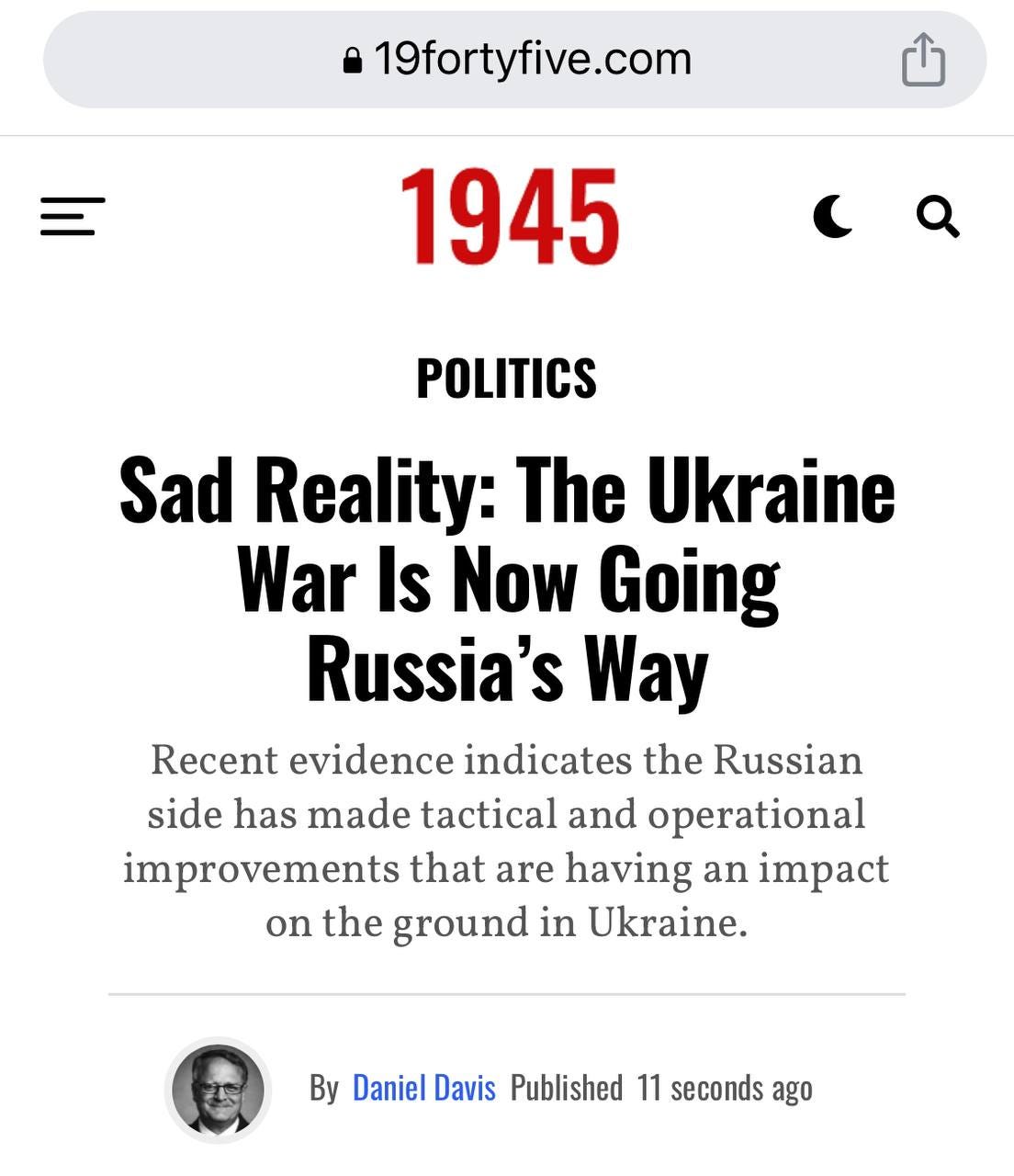




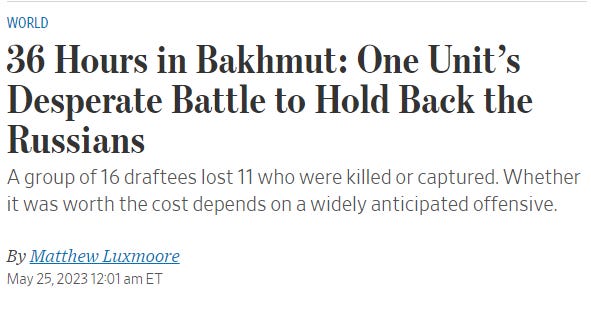







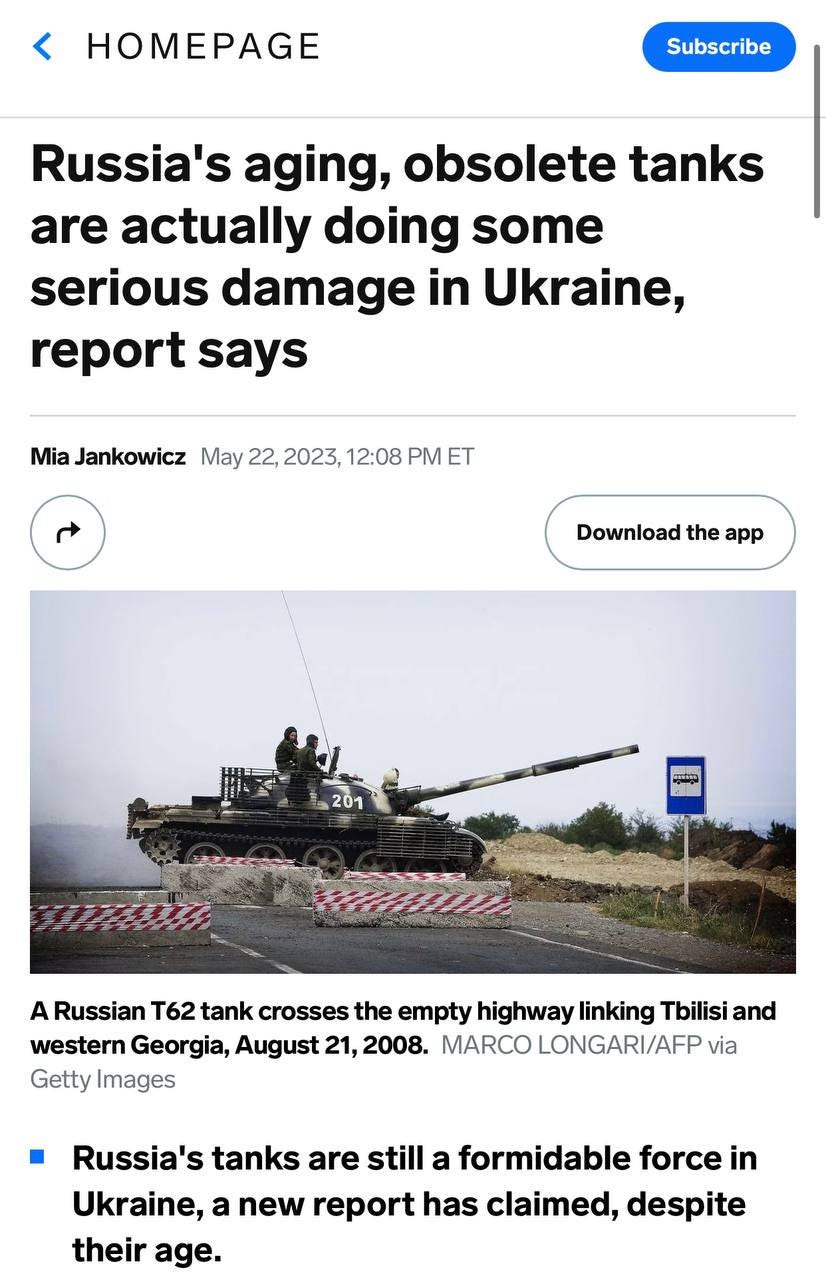

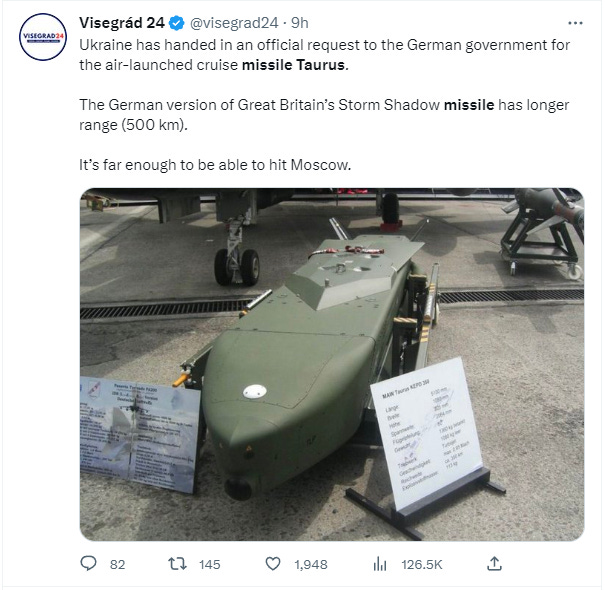
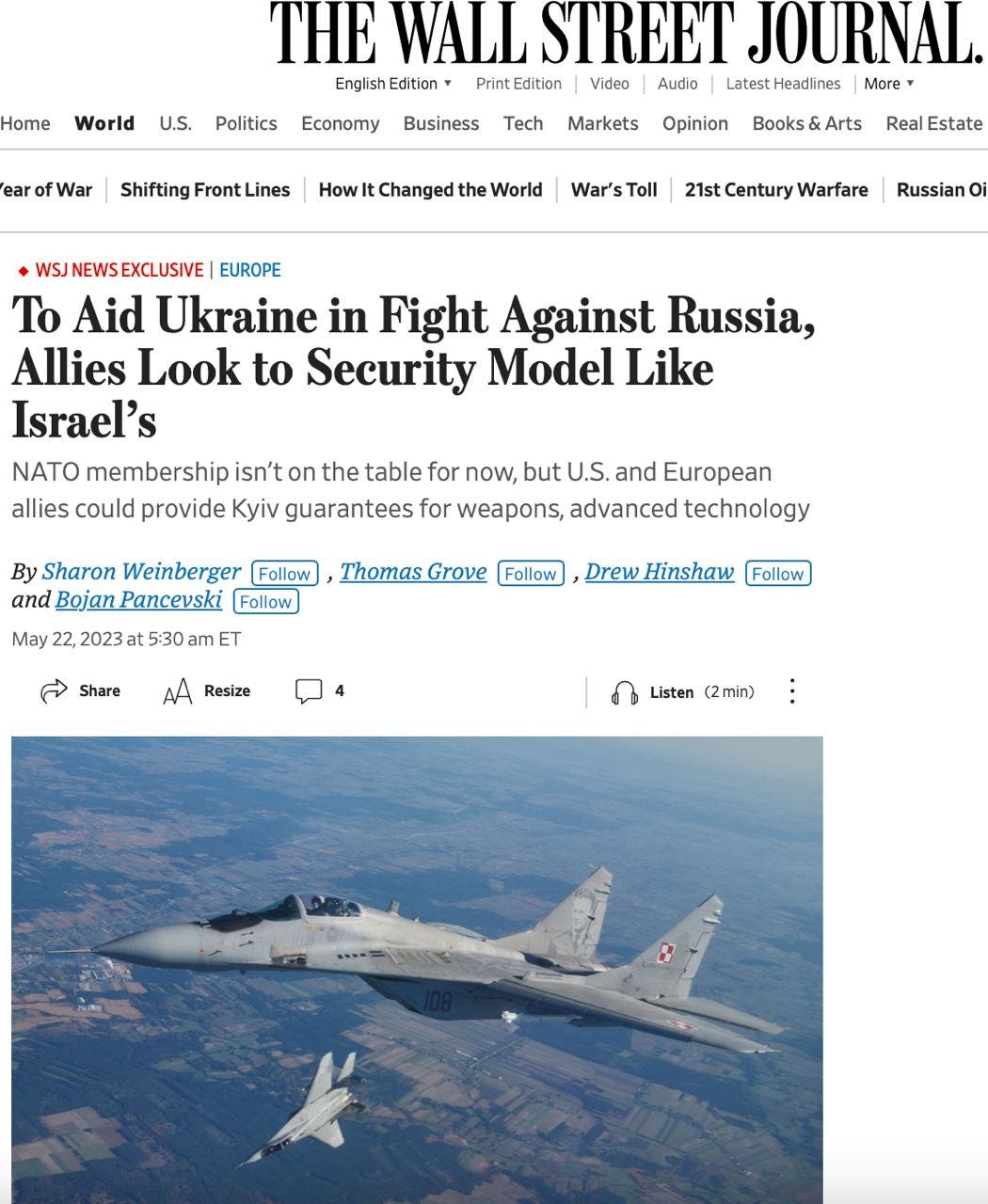



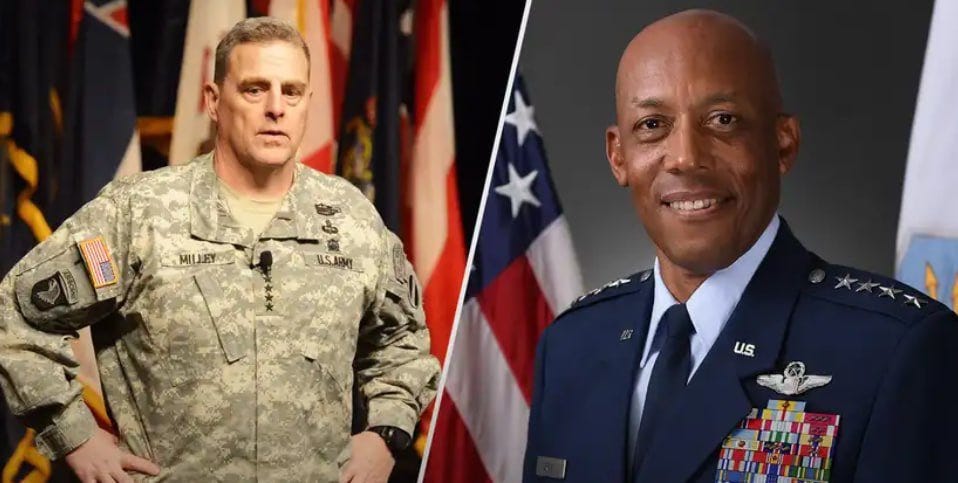

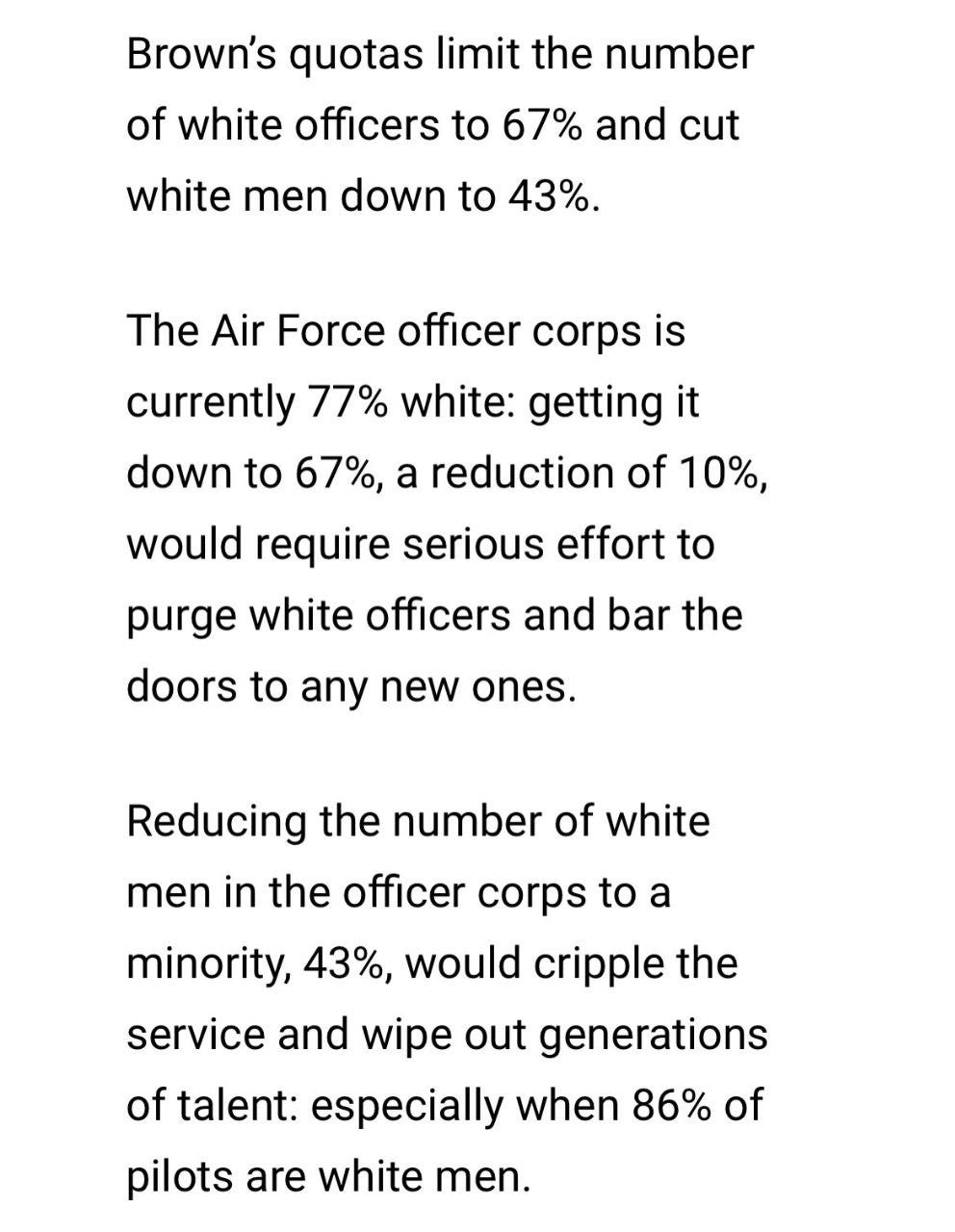


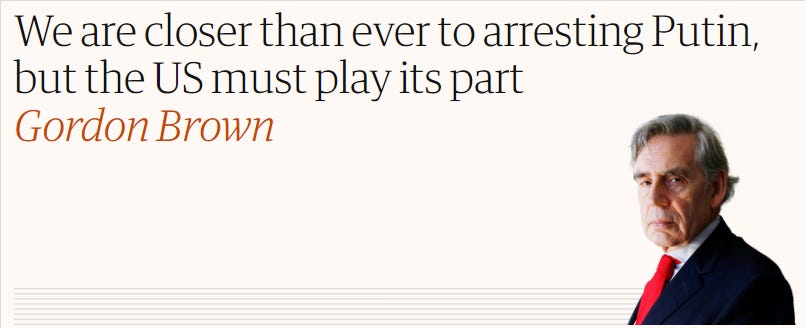
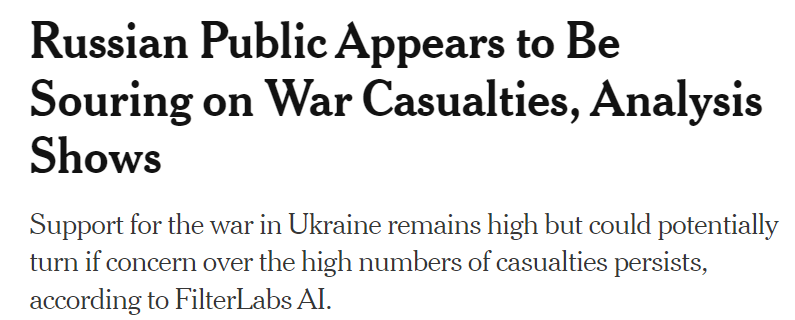


NATO = denial, delusion, deceit, endless hype and propaganda lies in the "narrative war" they are fighting. The war is about grift, re-election, and controlling their own populations by ironically destroying their own economies. Empire of Lies and Destruction. Russia will not be safe until the Empire is defeated.
Thank you very much Simplicius. I never miss an article. The most interesting aspect of all these sites is the comments. If you scroll down to for example 1945s article and review them Lt Col Daniel Davis is dismissed as a Russian Propagandist and they are highlighting FPV drone and the recent stormshadow missile strikes on the ammo dumps as battlefield turning the tide. Its embarrassing as a lot of the commenters also have military experience at officer level but they do not realize that war is dynamic and not based off of past experiences.
Push for victory on the battlefield and not in the information space I say, but You are a ray of light in the information theater.